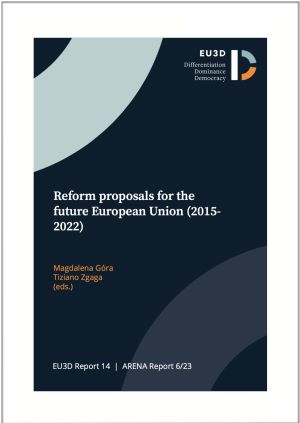An important part of research under WP5 is the debate on the Future of Europe. Citizens, institutions, politicians, civil society organisations and other actors have contributed to this debate with proposals. While much attention has been paid to the proposals of institutional actors, the proposals of civil society remain unexplored.
This public searchable database collects proposals on reforming the EU that a broad range of actors submitted between 2015 and 2022. The database of reform proposals is the result of broad cooperation between members of the EU3D project. The goal with this database is to systematically analyse the proposals, the impact that they proposals can have on the EU, and the interaction between these proposals.
In connection with the research of debates in national parliaments and public opinion about differentiation, this database allows researchers to make sense of the variety of actors and their proposals for reforming the EU. The database is a key constituent of WP5, whose main aims are to establish:
- the prevailing dividing lines among EU reform proposals;
- how these proposals seek to deal with the problematic forms of differentiation;
- what alternative EU governance models the proposals defend.
Download the the database (xls)
The dataset contains 950 reform proposals from 12 European member states. Reform proposals were hand-coded across variables describing several characteristics. The reform proposals were hand-coded by a team of coders from EU3D partner institutions. In total, proposals were coded across 87 variables. You can find the codebook annexed to the report.You can find the following information about the proposals in the database:
- Who? The database contains information of the actors who sent the proposal, for example their nationality, the type of actor as well as whether they are national or European actors.
- When & where? The database also contains information about when and where the proposal was sent.
- What? The content of the proposals is also coded, and the database includes information on the type of proposal, the policy areas mentioned, mentions of differentiation (multiple forms), dominance and democracy and mentions of how to finance the proposed objectives.
- Why? The proposals are coded according to the reason they were sent.
- How? The database also includes information about how the proposal was sent as well as technical information.
- Directed at whom? Finally, the database includes information on the addressee of the proposal and its link to other proposals.
Download the proposals (zip folder)
Read more in the report about the database


